How much of the Apple tax windfall should we spend on defence?
This is a live question for the new Irish Government - mostly because of the radical change to the security environment brought about by the Ukraine war - but also because of the radical agenda of the new US President Donald J Trump.
Sixteen billion Euro, unexpectedly available to the Government, just when the unexpected has happened. How much to spend on the military?
None of it? Half of it? All of it?
And that's just for equipment – like radar, air and missile defence, basic naval detection and armament systems. And not much of it at that.
Ongoing personnel costs and maintenance and replacement costs will all increase from their current, incredibly low levels - that much we know from Government decisions.
More will probably be needed if a national resilience plan is brought to fruition.
How do we make a vulnerable country more resilient to natural disaster, old-fashioned bombing-type war and, more particularly, the new way of war: cyber, hybrid, psychological? Where is that money going to come from?
The question has become more urgent this week, following statements from the Trump administration on trade, taxation, industrial policy, defence policy - and the announcement of an initiative to end the war in Ukraine.
The President's peace plan essentially amounts to "we are going to build a wall through Ukraine, and Europe's going to pay for it".
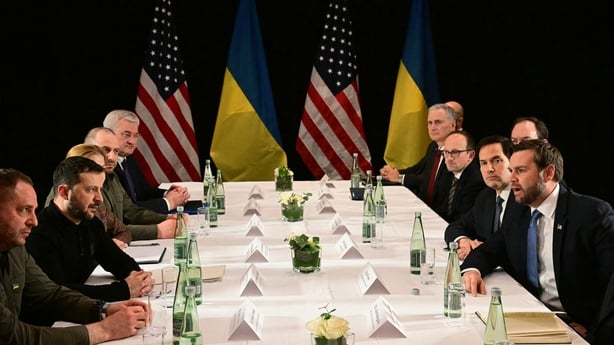
And the contours of that peace, at least as they have been sketched out by the President and his lieutenants, is causing deep unease in European capitals, and forcing most of them to confront things they have been putting off for decades - notably defence spending, but also energy policy.
They are two key drivers for the EU's economy, which has flagged for two decades, reeling from the financial crisis, the war in Ukraine, the energy shock it provoked and the glacial pace of moves to mobilise the wealth of Europe for investment in Europe through the so-called capital markets union, which has a new name now - a sure sign of a lack of progress.
The announcement of formal contact between the US and Russia - an-hour-and-a-half long phone call between Vladimir Putin and Donald Trump – has catalysed a lot of decision processes in Europe that have been forming over the past decade.
Trump wants Europe to spend more on defence
The idea that Europe needs to spend more on defence was shocked into life by the Russian invasion of Crimea in 2014. That's when the NATO states set the 2%-of-GDP spending target.
Mr Trump has claimed subsequent increases as all his own work, of course. He had reason to complain - the EU had in many cases slacked off.
That changed with the full-scale Russian invasion of Ukraine - which, as he likes to remind everyone, happened when Joe Biden was president.
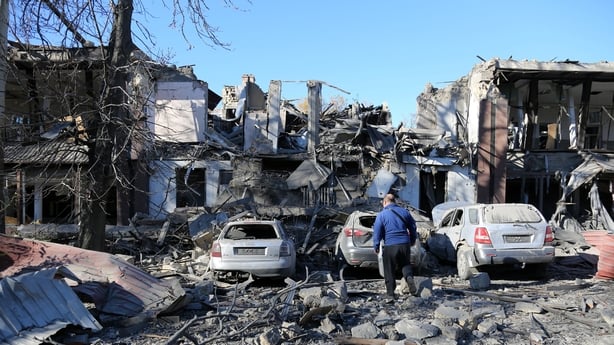
Now, Mr Trump is back and wants Europe to lock in the defence spending rise and not slack off again.
And he wants the Europeans to spend most of their increasing defence budgets on American advanced-weapons systems.
That’s why he has talked of the Europeans deploying troops and military assets into Ukraine to protect Ukranian sovereignty after a peace deal with Russia - one that costs Ukraine territory, how much though is still to be decided.
The administration later suggested they could give some backing to the Europeans in terms of logistics, intelligence and weapons sales. They also offered to sell advanced weapons to Ukraine - but want half a trillion dollars-worth of raw materials, notably rare earths from the Ukrainians.
It sounds like it would be a sort of joint venture to give the US a commercial stake in the country, a venture that might be tantamount to a security guarantee - but one that essentially pays for itself.
This is part of the transactional mindset on display in Washington this past week, including the "plan" for reciprocal tariffs - premised on the notion that the rest of the world is ripping off the US and has to be made to "pay its own way".
Trump criticises Canada's low spending on defence
Defence is part of this worldview. In the same answer in which he trashed EU governments for charging VAT on American imports, Donald Trump on Thursday explicitly linked tariff and trade policy with defence policy, laying into Canada (one of the true laggards on the NATO 2% spending commitment) for not spending more on defence.
"Canada has been tough on the military because they have a very low military cost. They think we're going to, you know, protect them with our military, which is unfair. So Canada is going to be a very interesting situation, because, you know, we just don't need their product," Mr Trump said.
"Why would we pay $200 billion a year in subsidies to Canada when they're not a state. You do that for a state, but you don't do that for somebody else's country. So I think Canada is going to be a very serious contender to be our 51st state.
"Ireland has no capacity to protect these cables, from which the country earns its vast corporate tax windfalls, or the airspace above them."
"I spoke to 'Governor' Trudeau on numerous occasions, and we'll see what happens. But the [Canadian] people would pay much less tax than they're paying right now and they’d have perfect military protection."
So Mr Trump looks at the deficit in goods trade with Canada as a subsidy, links it to a lack of defence spending by a NATO partner that is supposed to be in charge of policing the high arctic and Greenland - an area that has become of much more strategic significance in this age of climate change, melting ice caps and the hunt for rare minerals and metals.
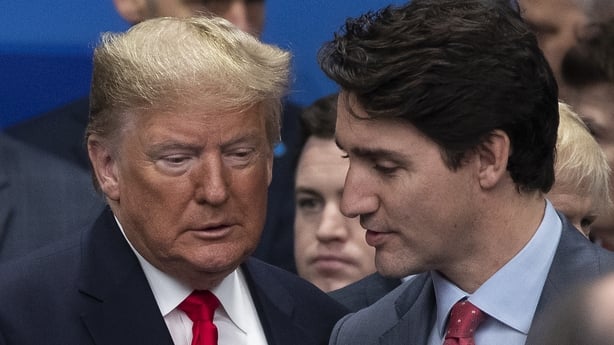
What then is he to make of Ireland, another country with a large trade surplus with the US (in goods), and a huge trade deficit in the trade in services – much of which are enabled by the undersea data cables that link Ireland with the US and mainland Europe?
Ireland has no capacity to protect these cables, from which the country earns its vast corporate tax windfalls, or the airspace above them.
Irish defence budget is 0.2% of GDP
Ireland doesn’t do armed neutrality in the Swiss or Austrian way – let alone the Swedish or Finnish way, before those countries joined NATO (the Irish Government used to call the latter two "like-minded states" when it came to talking about defence. Not anymore). Nor is it part of a defence alliance, in which it can, like Iceland or the Baltic states, contract out part of the work to others.
The Irish defence budget is not 2% of GDP, but 0.2% of GDP.
And, yes, I know GDP is not an accurate representation of the Irish economy - but it's the yardstick against which everything is measured internationally for the time being. It's the yardstick Mr Trump will use.
Spending more on defence while dealing with a housing crisis (one that grips several advanced economies, not least of them the United States, where there is a huge housing shortage and soaring rents and purchase costs) implies wringing more value for money from existing spending lines - driving efficiency gains harder, getting value for money.
It would create employment in military jobs - particularly high-tech military and defence industry related jobs.
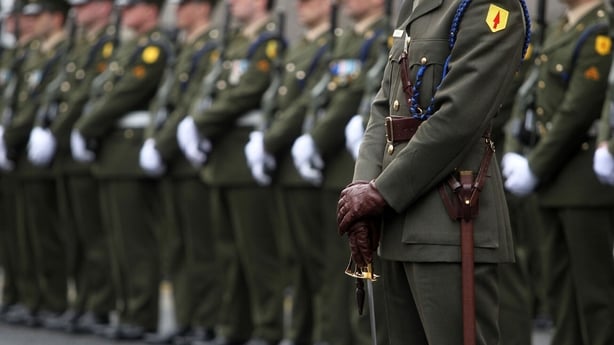
And the indigenous technology sector anticipates growth from research funding and military contracts, as these systems depend on (and throw off) high technology capability and expertise.
It's a piece of the industrial policy jigsaw puzzle that has been there for at least three decades in Europe, and which has become a top-tier government issue with the Ukraine war, and the re-emergence of Mr Trump.
The big defence project right now in Europe is a missile defence system called the European Sky Shield. It's a European counterpart to Israel’s Iron Dome.
Mr Trump has also said he wants an Iron Dome for the US. The European plan was set in motion by the outgoing German Chancellor Olaf Scholz in 2022, after witnessing the destruction of Ukranian cities from Russian rockets and cruise missiles.
Pressure on Ireland to join defence system
Most European countries have joined this initiative, which relies heavily on buying existing US technology, and adding in European systems in the future.
The French, Italians and Spanish are not in the Sky Shield consortium. The French say Europe should develop its own technology, so it doesn’t have to rely on the US.
Ireland has not signed up to either group. Neutral Switzerland has and voted to join the Sky Shield plan last autumn. Neutral Austria is also joining Sky Shield. Albania and Portugal joined last month.
Pressure will be on for the Irish to join one of the consortiums, and the German-led one is the one that uses the most US technology. The UK is also a member of Sky Shield.
Plugging into a European system like the planned Sky Shield would be relatively straightforward and, as we know from the Covid pandemic, bulk-buying gets better prices.
For the Irish State, it would still be a large-scale investment project. The trouble is Ireland has not distinguished itself in its ability to manage large-scale spending projects.
'Corporation tax is arguably Ireland's biggest strategic weakness'
A front-page article in the Wall Street Journal recently about the Irish Government's overflowing coffers from corporation tax led off with two examples of poor state spending controls: the National Children's Hospital and the notorious Leinster House bicycle shed - notorious now in the United States, thanks to a newspaper with the biggest print run in the US.
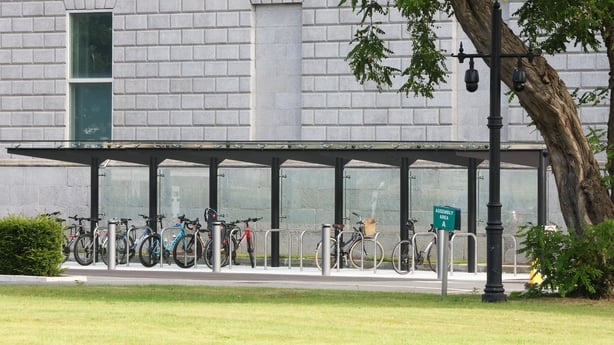
And corporation tax is arguably Ireland’s biggest strategic weakness in its dealings with the new US administration, which is hungry to suck in any available tax revenues of US companies that are being paid overseas, in order to fund tax cuts and cut government borrowing at home.
That's why Mr Trump is planning on an "External Revenue Service" to run alongside the current US tax authority, the Internal Revenue Service (the IRS).
"From East and West, the squeeze is on."
In a recent note on the possible impact of a change in the US tariff and tax regime under the new Trump administration, the Central Bank of Ireland said: "Ultimately, higher tariffs or changes in tax regimes that reduce the profitability of operations in Ireland could, to varying degrees, influence future investment decisions by US MNEs here, employment levels in their Irish operations, and the related tax receipts to the Irish exchequer from their activities in Ireland and globally."
In other words, the golden goose will be cooked, and it warns that the impact on multinational profitability levels in Ireland - particularly for mobile Intellectual Property - could very rapidly see a swing away from budget surpluses from bumper corporate tax receipts to a persistent deficit, in which the state is once again running up debt to fund current services.
That's the existing level of State spending, without any additional money for defence. Or housing. Or health. Or welfare.
And the Taoiseach told the Dáil last week that Ireland’s contribution to the EU budget will likely rise in the next seven-year budget round, with extra security investment part of that budget rise - along with coping with the consequences of the Ukraine war and its aftermath.
From East and West, the squeeze is on. The Americans have been asking nicely for a long time.
They are not going to be nice about it any more.
Like it or not, you do have to take note of what the President of the United States says, especially in the weeks before the annual migration of minsters to the US for St Patrick's Day.
Questions will be asked, answers will be expected – an open chequebook would be appreciated.
How much of that Apple money do you want to spend on American arms?





